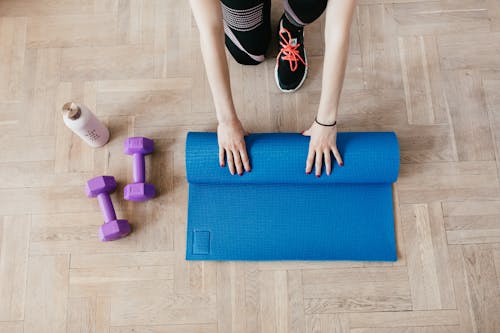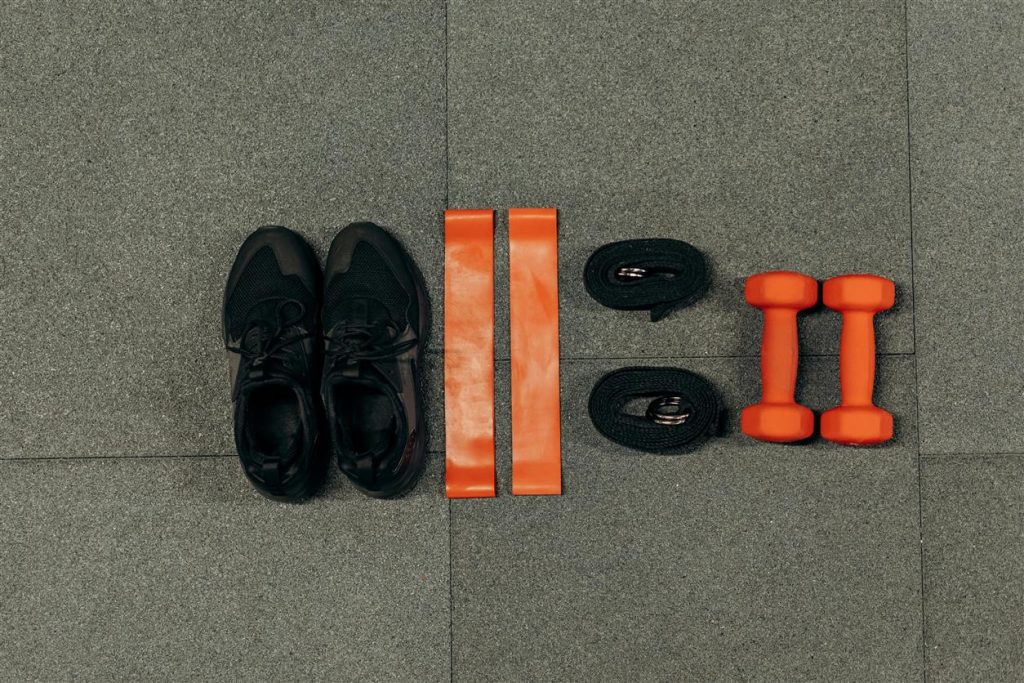
Creating a fitness program that you can adhere to consistently is a common challenge for many individuals. The journey toward a healthier lifestyle often begins with a well-structured plan, but sustaining it requires more than just setting goals. It involves understanding personal motivations, overcoming obstacles, and integrating fitness into your daily routine. This essay explores the essential components of developing a fitness program that you will stick to, including goal setting, planning, motivation, overcoming barriers, and evaluating progress.
Understanding Your Fitness Goals
Define Your Objectives
Short-Term vs. Long-Term Goals
- Short-Term Goals: Set specific, achievable short-term goals that provide immediate feedback and motivation. Examples include losing five pounds, running a 5K, or increasing your strength in a particular exercise.
- Long-Term Goals: Establish broader long-term goals that align with your overall vision of health and fitness. These could include achieving a certain level of physical fitness, maintaining a healthy weight, or improving overall well-being.
SMART Goals Framework
- Specific: Clearly define what you want to achieve. For instance, rather than saying “I want to get fit,” specify “I want to be able to run three miles in under 30 minutes.”
- Measurable: Ensure your goals are quantifiable. Track progress with metrics such as weight, endurance levels, or exercise repetitions.
- Achievable: Set realistic goals that are attainable given your current fitness level and resources. Avoid goals that are too ambitious or impractical.
- Relevant: Align goals with your personal interests and motivations. Choose goals that resonate with your values and desires.
- Time-Bound: Establish a timeframe for achieving your goals. This creates a sense of urgency and helps with tracking progress.
Designing Your Fitness Program
Personalization
Assess Your Current Fitness Level
- Fitness Assessment: Conduct a fitness assessment to determine your starting point. This could include evaluating your cardiovascular fitness, strength, flexibility, and body composition.
- Medical Clearance: If you have any medical conditions or concerns, seek medical clearance before starting a new fitness program.
Choose Activities You Enjoy
- Variety and Preferences: Incorporate a mix of activities that you enjoy, whether it’s running, swimming, weightlifting, yoga, or dancing. Enjoyable activities increase adherence to the program.
- Try New Things: Experiment with different types of exercise to discover what you like best. This can prevent boredom and keep you engaged.
Create a Balanced Routine
Components of a Balanced Fitness Program
- Cardiovascular Exercise: Include activities that elevate your heart rate and improve cardiovascular health, such as running, cycling, or brisk walking.
- Strength Training: Incorporate resistance exercises to build muscle strength and endurance. This can include weightlifting, bodyweight exercises, or resistance bands.
- Flexibility and Mobility: Integrate stretching, yoga, or mobility exercises to enhance flexibility and reduce the risk of injury.
- Rest and Recovery: Ensure adequate rest and recovery periods to allow your body to repair and prevent overtraining.
Schedule and Frequency
Determine Your Workout Schedule
- Frequency: Decide how many days per week you will exercise. A general recommendation is 3-5 days of exercise per week, depending on your fitness level and goals.
- Duration: Plan the duration of each workout session. Aim for at least 30 minutes per session, adjusting based on your fitness level and time constraints.
- Consistency: Establish a regular workout schedule that fits into your daily routine. Consistency is key to building and maintaining a habit.
Building Motivation and Adherence
Find Your “Why”
Identify Personal Motivators
- Health Benefits: Focus on the health benefits of exercise, such as improved energy levels, better sleep, and reduced risk of chronic diseases.
- Personal Goals: Reflect on personal goals and how achieving them will impact your life. This could include looking and feeling better, improving athletic performance, or achieving a specific fitness milestone.
Create a Support System
Social Support
- Workout Partners: Find a workout buddy or join a fitness group to provide accountability and motivation.
- Social Engagement: Share your fitness goals and progress with friends and family. Their support and encouragement can boost your motivation.
Use Motivational Tools
Track Your Progress
- Fitness Apps and Journals: Utilize fitness apps or journals to track your workouts, progress, and achievements. Seeing your progress can be motivating and help you stay on track.
- Visual Reminders: Use visual reminders, such as motivational quotes or progress charts, to keep your goals in sight.
Set Rewards
Incentives for Achievements
- Celebrate Milestones: Reward yourself for reaching fitness milestones or achieving short-term goals. This could be a treat, a new workout outfit, or a relaxing activity.
- Positive Reinforcement: Use rewards as positive reinforcement to maintain motivation and reinforce your commitment to your fitness program.
Overcoming Common Barriers
Addressing Obstacles
Time Constraints
- Time Management: Plan and prioritize your workouts. Integrate exercise into your daily routine, such as exercising during lunch breaks or early in the morning.
- Efficient Workouts: Opt for efficient workout routines, such as high-intensity interval training (HIIT), that deliver results in a shorter amount of time.
Lack of Motivation
- Variety and Fun: Keep your workouts varied and enjoyable to prevent boredom and maintain interest.
- Goal Adjustment: Adjust your goals and fitness program as needed to keep them realistic and aligned with your evolving interests and lifestyle.
Injury and Illness
- Modify Workouts: If you experience an injury or illness, modify your workouts or seek professional advice to ensure you can continue exercising safely.
- Focus on Recovery: Prioritize recovery and rehabilitation to prevent further issues and support a return to your fitness routine.
Evaluating and Adjusting Your Fitness Program
Regular Assessments
Track Progress and Results
- Fitness Testing: Periodically reassess your fitness level to track progress and identify areas for improvement. This could include measuring strength, endurance, flexibility, or body composition.
- Review Goals: Reevaluate your goals and adjust them based on your progress and changing priorities.
Adapt Your Program
Make Adjustments
- Update Workouts: Modify your workout routines to include new exercises, increase intensity, or address specific goals.
- Stay Flexible: Be open to adjusting your fitness program as needed to accommodate changes in your schedule, preferences, or fitness level.
Maintain Motivation
Keep It Fresh
- Explore New Activities: Try new forms of exercise or fitness classes to keep things interesting and prevent routine fatigue.
- Set New Challenges: Set new fitness challenges or goals to continue pushing yourself and maintaining motivation.
Success Stories and Case Studies
Case Study 1: The Busy Professional
A busy professional achieved fitness success by:
- Time Management: Incorporating short, high-intensity workouts into a tight schedule.
- Home Workouts: Utilizing home workout programs to save time and ensure consistency.
- Goal Setting: Setting specific, achievable goals and tracking progress with a fitness app.
Case Study 2: The New Fitness Enthusiast
A new fitness enthusiast maintained adherence by:
- Social Support: Joining a fitness class and engaging with a supportive community.
- Enjoyable Activities: Choosing activities that were fun and aligned with personal interests.
- Reward System: Implementing a reward system to celebrate milestones and maintain motivation.
The Future of Fitness Programs
Emerging Trends
Technology Integration
- Fitness Apps and Wearables: Advances in technology, such as fitness apps and wearables, offer personalized training plans, real-time feedback, and progress tracking.
- Virtual Fitness: The rise of virtual fitness classes and online coaching provides flexible options for maintaining a fitness routine.
Holistic Approaches
Mind-Body Connection
- Integrative Fitness: Emphasizing the connection between physical fitness and mental well-being, incorporating practices such as mindfulness, meditation, and stress management.
- Balanced Lifestyle: Adopting a holistic approach to fitness that includes nutrition, sleep, and overall lifestyle factors.

Creating a fitness program that you will stick to involves more than just planning a workout routine. It requires a deep understanding of your personal goals, motivations, and challenges, as well as a commitment to integrating fitness into your daily life. By setting clear goals, designing a balanced program, staying motivated, and overcoming barriers, you can build a sustainable fitness routine that enhances your overall well-being. Regular evaluation and adjustment ensure that your program remains effective and aligned with your evolving needs. Embracing a holistic approach and leveraging emerging trends in fitness can further support your journey toward a healthier, more active lifestyle.



